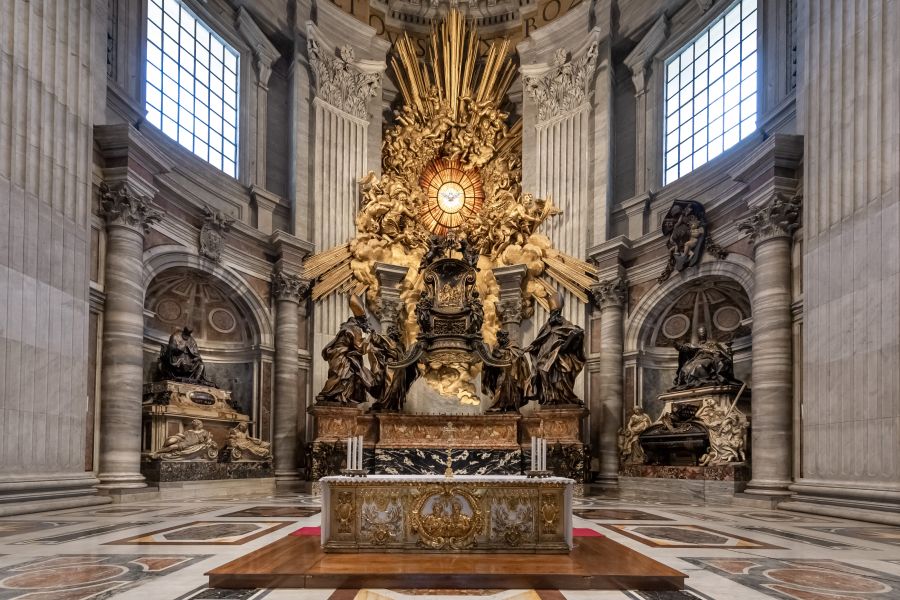
The Cathedra of Saint Peter
The “Cathedra Sancti Petri Apostoli” is traditionally considered to be the episcopal throne of Saint Peter: an ancient wooden throne, symbol of the Petrine primacy and the Pope’s magisterium, with ivory plaques depicting the labours of Hercules and with friezes, again in ivory, dating from the Carolingian age (9th century).